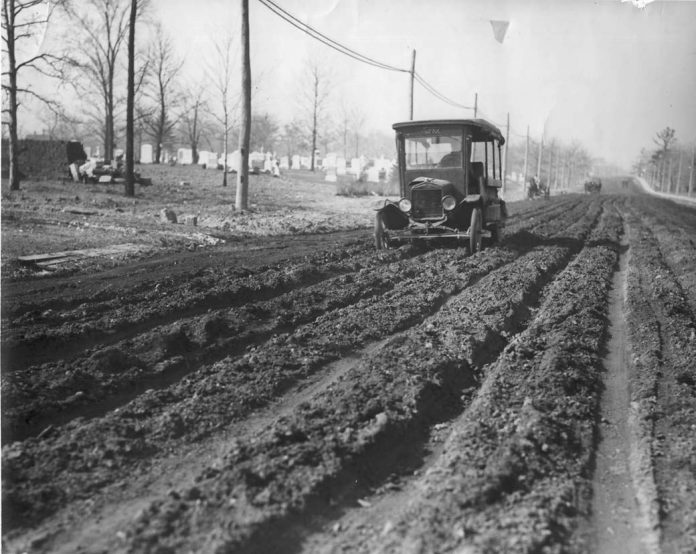A month ago this column was about the rural roads in western Pennsylvania and eastern Ohio being sometimes covered back in the 1940s and ’50s with a long-forgotten material called “red dog.”
Coal
There were many coal mining operations in the area in those days and much of the coal went to feed the dozens of steel mills in Pittsburgh, Youngstown and Cleveland.
The coal as mined contained slate, sulfur balls and other debris that made it undesirable for use in the mills, so cleaning and washing facilities to remove this junk were established in several places along the railroads that hauled the coal.
The waste removed from the coal was dumped into huge piles, which soon caught fire due to spontaneous combustion and would burn for years.
After the fires finally burned themselves out and the piles had cooled, what was left was a hard reddish orange ash that was discovered to make a good solid and inexpensive base or covering for the many dirt roads in the region.
Local entrepreneurs would lease the waste piles from the coal companies, move in a small power loading shovel and sell the ash, which was known as “red dog” by the truckload to township governments and truckers.
One of these coal-washing operations was built in the 1930s between Negley, Ohio, and the Pennsylvania-Ohio state line, and I hauled red dog out of there when I drove a dump truck in the early 1950s.
Readers
In that June 6 column, I asked if any Farm and Dairy reader recalled traveling on red dog roads back then, and I received several replies.
Wayne Cooper from Zelienople called and told me that he recalled some red dog being used in his area. Wayne also reminded me of something that I’d forgotten — one could always spot the car or truck of someone who lived on a red dog road, as in dry weather the vehicle would be covered in reddish dust, and in wet weather with red mud.
Dale Reimold, of Fredonia, Pennsylvania, wrote to say he remembered some of the dirt roads around his area had red dog on them and that his uncle had used it on his driveway. Dale also mentioned that the stuff was always being tracked into the house, especially in wet weather.
Nancy Britner from Carmichaels, Pennsylvania, sent a nice letter telling me that “Yes, I traveled on the red dog roads as I was a rural mail carrier for 23 years. At one time it [Carmichaels] was a very big coal producing area. They still have a parade in August each year called the King Koal Parade.
“Most of the mines are shut down now, and we are in the gas boom, gas wells everywhere. I was like the insurance man [mentioned in the original red dog column] when I was learning my 72-mile mail route. The carrier teaching me the route said something about a red dog road, and I thought I was going to see something special — well, not so!
“It was red and just like gravel but was hard on tires. I’m sure it was better than mud like it was 100 years ago, but that’s what some rural mail carriers had to drive on.
“Yes, there were lots of red dog roads in this area and the red dog was hard on tires, but most are black-topped now.”
Nancy goes on to say, “I get Farm and Dairy, and I do enjoy looking at it. I then give it to my son.”
One more letter from Craig Schloneger in Canton, Ohio. Craig writes that he heard the term “red dog” only once in his life, and didn’t know what it meant until he read the story in Farm and Dairy. In 1986, he had bought an old “Timken” house [to attract workers during an expansion in the early 1920s, the Timken Company built a number of houses for employees in Canton and guaranteed the mortgages] and was having the original driveway dug up and redone.
As the driveway work was progressing, Phil, an older man who lived nearby and who was originally from northern West Virginia, came over and asked Craig “if I knew where he could get some red dog.”
Craig didn’t know what red dog was but just told the neighbor he was sorry, but he didn’t know where to get it.
Craig continues, “So here in 2018 I turn to your article and see the term for the second time in my life, 30 some odd years later and now know what Phil was talking about.”
It’s fun when one of my stories brings back a memory for readers. Thanks to everyone who wrote or called with their recollections of red dog roads.














Boy that brought back memmorys from years ago . I remember red dog roads when I was a kid